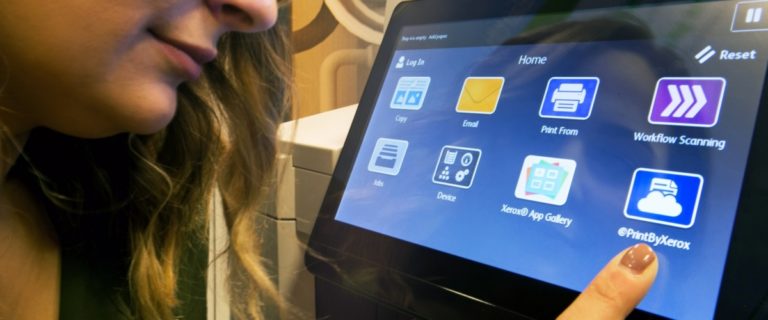Public resistance toward electronic health records poses a major challenge for healthcare providers. Here are 3 ways to engage patients.
By Charles Fred, president of healthcare Provider Solutions, Xerox
Remember the first time you walked into an airport and found that kiosks had replaced some ticket agents? You probably felt confused and a little apprehensive about using the new technology. In healthcare, research indicates that Americans are similarly uneasy about the transition to electronic medical records — a mindset that must change for our healthcare system to advance.
 Our fourth annual electronic health records survey revealed that only 32 percent of Americans want their medical records to go digital, with the vast majority (83 percent) citing concerns about security. Fears range from personal information being stolen and misused by computer hackers to digital medical files being lost, damaged or corrupted.
Our fourth annual electronic health records survey revealed that only 32 percent of Americans want their medical records to go digital, with the vast majority (83 percent) citing concerns about security. Fears range from personal information being stolen and misused by computer hackers to digital medical files being lost, damaged or corrupted.
Public resistance toward EHRs poses a major challenge for healthcare providers seeking Meaningful Use Stage 2 incentive payments from the government in 2014. Hospitals and physicians will have to make patients’ health records available via online portals, and must have 5 percent of their patients access the data. A main purpose of this is to shift patients toward a more active role in their own healthcare.
While our survey showed that Americans’ acceptance of EHRs has somewhat progressed over the past four years, more than two-thirds said their doctors have not involved them in the transition to digital medical records and only 19 percent have online access to such.
These stats indicate a need for healthcare providers to improve their communication to broaden patient knowledge of EHRs and overall engagement in their own health. Some ways clinicians can do this are by:
-
Empowering patients.
Providers should take time to explain that the advantages of EHRs go beyond direct access to their medical history, enabling them to check test results, share their records with other caregivers and refill prescriptions.
-
Easing security fears.
Our survey results indicate that consumers want their medical information to be kept confidential, thus giving patients a better understanding of the security features of EHRs could ease their concerns.
-
Engaging an outside partner.
Incorporating broader communication adds to clinicians’ workloads and can seem daunting, especially when you consider that the state of EHR adoption differs amongst caregivers – some healthcare facilities are still deciding between EHR systems. The right partner can help healthcare providers map out plans that go beyond new workflows and programs that will attract, teach and support patients’ use of online portals for MUS2.
As a patient, has your doctor involved you in the transition to electronic medical records? If you work in the healthcare field, what is your organization doing to increase patient engagement?



The right partner can make the transition to an EHR much easier for the physician. An EHR system that uses a rich clinical narrative for documentation purposes makes it easy to decipher for both the patients and the referring physicians. Having a rich clinical narrative can help ease the transition to digital health care records.
[…] “Electronic Health Records: Overcoming the Patients’ Digital Divide | Simplify Work.R… Simplify Work. N.p., 03 Dec. 2013. Web. 16 Nov. 2015. <https://simplifywork.blogs.xerox.com/2013/12/04/electronic-health-records-overcoming-the-patients-digital-divide-2/#.VlA2fN-rSRs>. […]